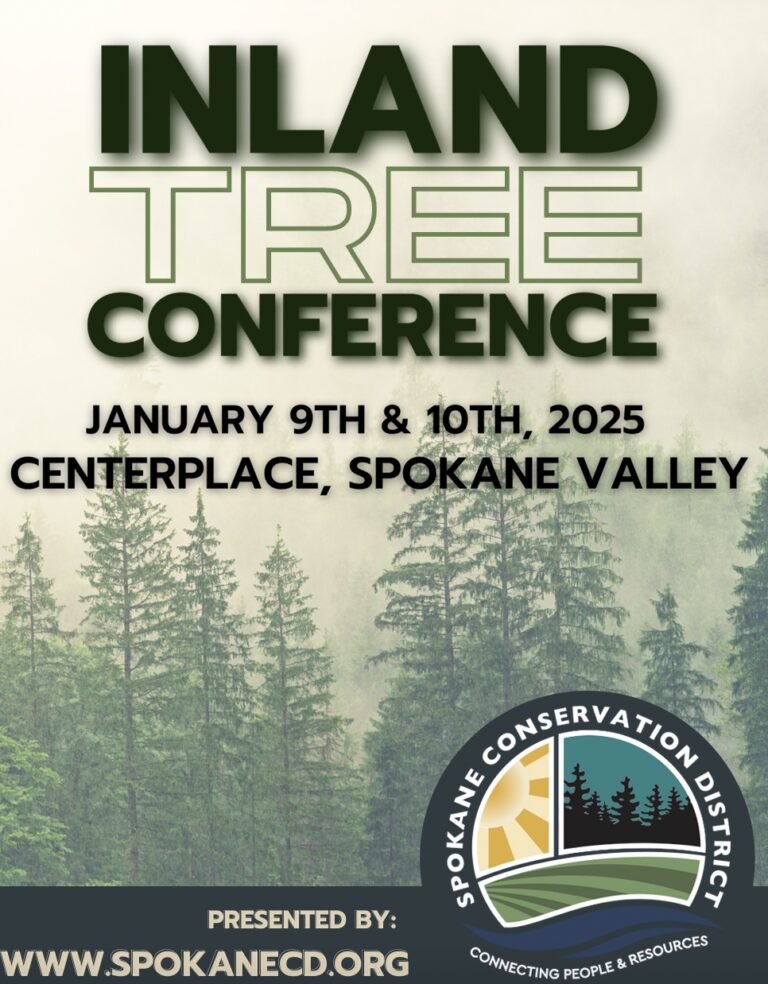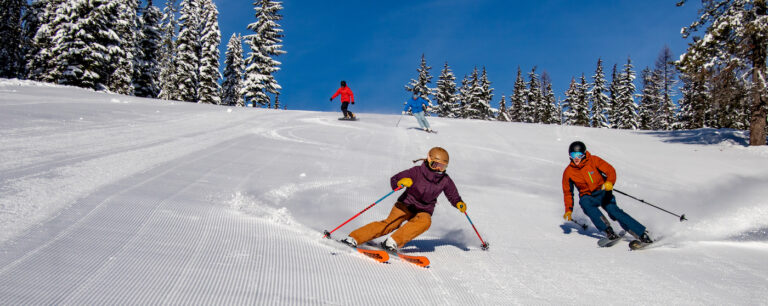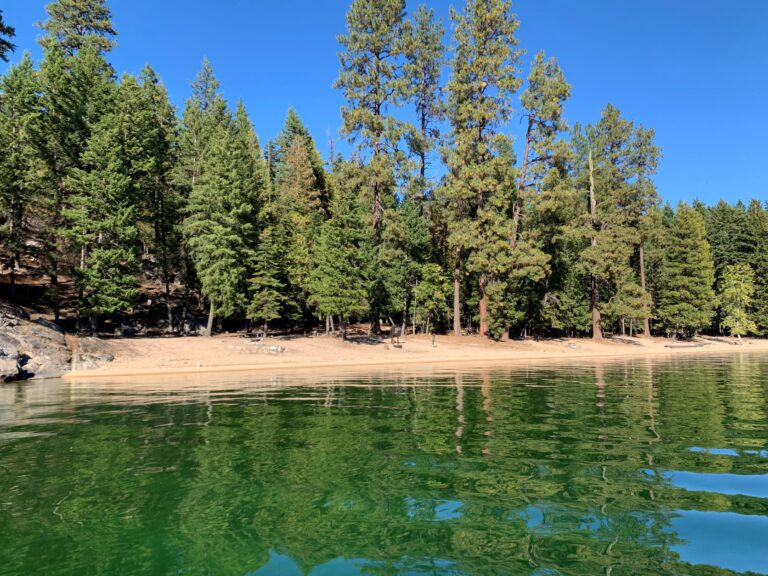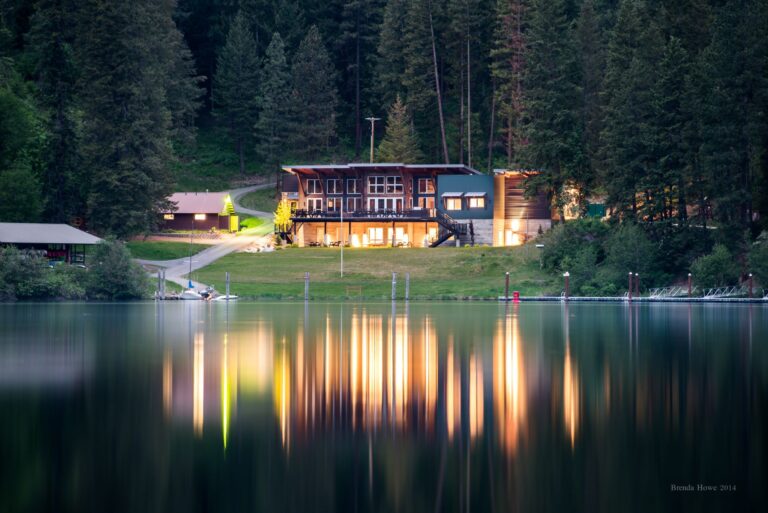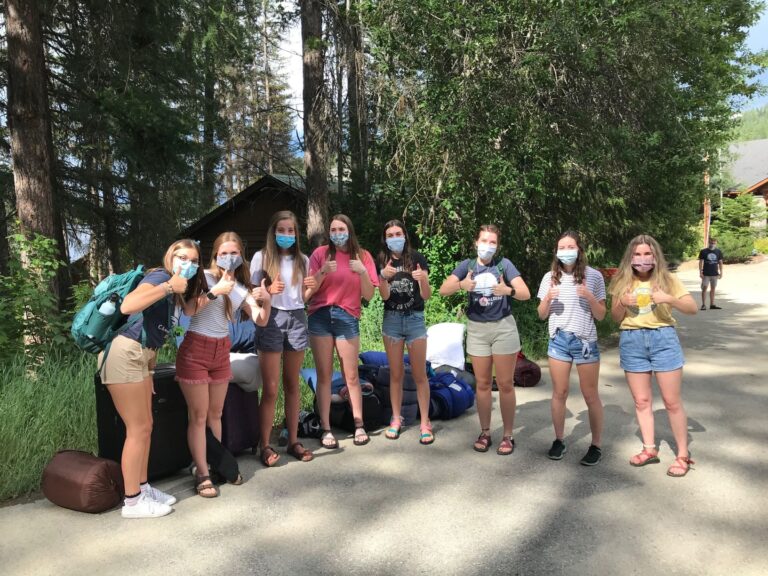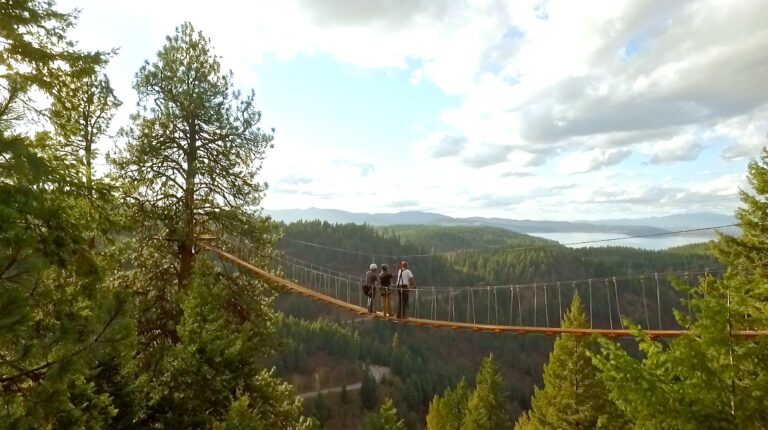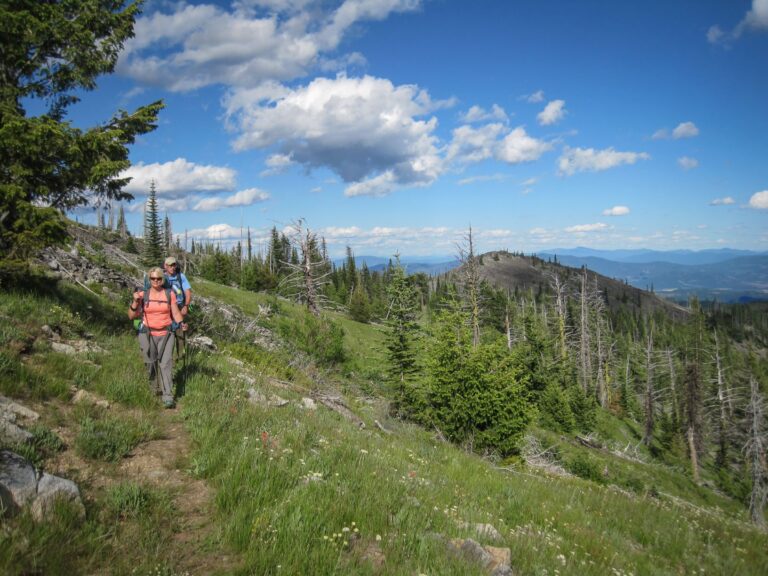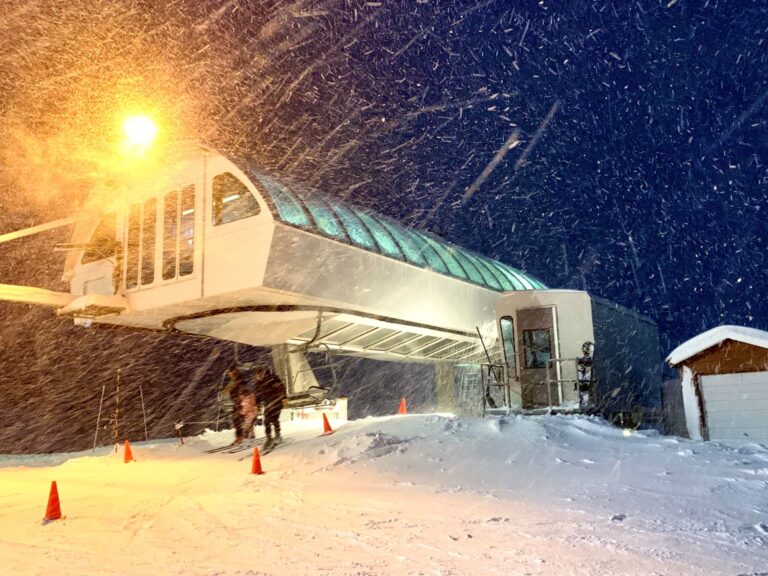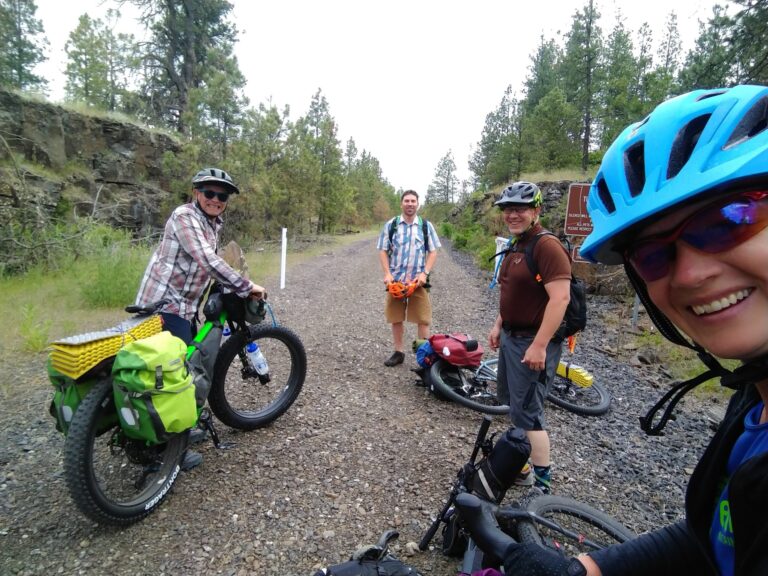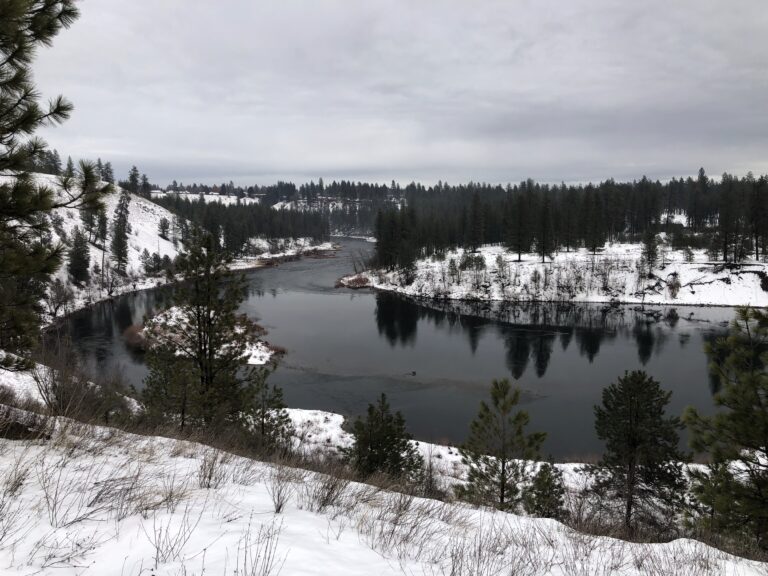By Jon Jonckers
Cover photo courtesy of Jon Jonckers
In the heart of downtown Spokane below the Monroe Street Bridge, tucked against the roaring Spokane Falls, is a stunning urban escape that offers both scenic beauty and historical significance. Originally established in the early 1970s as part of the Monroe Street Dam redevelopment in preparation for Expo ’74, Huntington Park has morphed into a remarkable public space.
Although in some ways it may be overshadowed by the size and spectacle of Riverfront Park, Huntington features several unique aspects that are highly uncommon for its size and location. From City Hall Plaza, winding paths of stone and gravel offer progressively immersive views down to the cascade of the lower falls. Interpretive signs detail local culture, ecology and energy history. Engaging art installations, including towering tribal figures and sculpted salmon scenes, educate and honor the spiritual and cultural importance of the falls. In the spring, the mist and the noise from the falls are breathtaking. In the fall, the color from the fiery foliage is a photographer’s dreamscape.
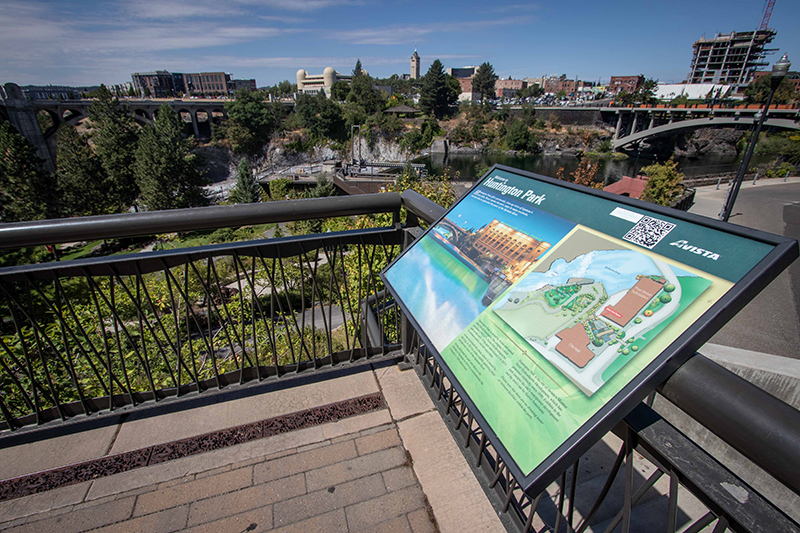
Huntington Park is named after David L. Huntington, the third president of Washington Water Power (now Avista). David L. Huntington started working for Washington Water Power in 1884. Beginning as its treasurer, he quickly climbed the ranks and assumed the role of president in 1910. Under Huntington’s leadership, Washington Water Power gained over 50,000 accounts and was providing services to 10 counties in Eastern Washington and six counties in North Idaho.
The dramatic river and falls views may be the park’s primary draw, but the Monroe Street Bridge, towering above downstream, is an engineering spectacle worth pondering. Strangely enough, it’s the third bridge constructed at that location. When the current bridge was completed in 1911, it was known for being the largest concrete arch bridge by length in the United States. The design of the Monroe Street Bridge was largely copied from the Rocky River Bridge in Cleveland, Ohio, but was built one foot longer to make it the longest concrete arch in the country at the time.
Visitors looking up may also see the SkyRide gondola that begins and ends at Riverfront Park on the ride’s tour of the falls. The lilac-colored cars travel the entire length of Huntington Park, twice, offering an alternative aerial tour of the river canyon. Also, while it technically isn’t part of Huntington Park, plan a walk through A Place of Truths Plaza near the Monroe Street Bridge and Downtown Library on the south rim of the gorge. The plaza’s name is presented in both Salish and English on interpretive signs and the plaza offers spectacular views of Spokane Falls and Huntington Park. Large metal statues of native wildlife and fishing scenes commemorate the river’s importance as a historic tribal salmon fishing ground, and a poem by Sherman Alexie titled “That Place Where Ghosts of Salmon Jump” is etched into a granite spiral at the west end of the plaza.
Huntington Park and A Place of Truths Plaza are more than a city promenade; these public spaces serve as an interactive reminder of the significance of the Spokane River that stretches back thousands of years and invite reflection on our connection to the river, the tragic history of the Spokane region’s Indigenous inhabitants, and the loss of the river’s once-abundant salmon runs. Open year-round and free to visit, Huntington Park offers a powerful urban nature experience where art, history and nature converge in a walkable tribute to the city’s defining feature: the Spokane River.
A quick search on the Out There Outdoors website brings up over 200 articles written by Jon Jonckers. He’s been a constant contributor since 2006, and he still enjoys sharing his love for the region with anyone willing to listen.

